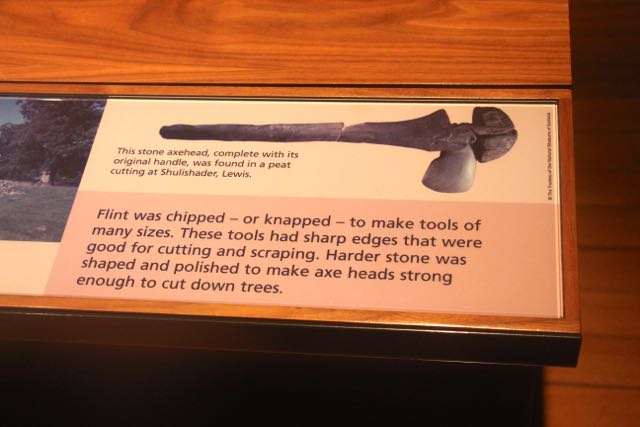Our drive today took us through the Trossachs, a beautiful area of wooded glens and lochs. It rained a bit, but only while we were in the car.
At Kilmahog, we stopped to see Hamish and Honey, two locally famous Highland cows. Like the ones we found yesterday, these beautiful creatures were right by a fence, and happy to let us take photos. There’s a parking lot, gift shop, and café there, and just as we about to leave, several busloads of tourists came in to see the cows. The gift shop sells bags of veggies so people can feed the animals! An elderly Scottish lady commented to Fred as she was getting into her car, “Those surely are the most photographed cows in Scotland.”
We continued on our way, arrived in Glasgow in the early afternoon, and checked into our hotel. The room is fine, but the bathroom is hilariously small. One has to approach the toilet on an angle, because there’s hardly any space between it and the door. ;)
After we got settled, we walked to the nearby botanical gardens. We walked through one of the massive glasshouses, and saw an extraordinary collection of plants — a whole room of begonias (one with polka dot leaves!), another room packed with all types of ferns, another with huge-leaved Amazonian plants, another with just cacti, and so on!
Next, we walked up a long street with interesting restaurants and shops. We stopped at a little French café for tea and (of course) cake. We continued on past the beautiful 550-year-old University of Glasgow (throngs of students on every sidewalk), and on to the Kelvingrove Art Gallery and Museum. The museum is huge, and like most Scottish museums, free. We saw some fantastic artifacts from the first inhabitants of Scotland, and learned about the remote archipelago of St. Kilda, in the North Atlantic. This sparked a great deal of online research back at our room — the story of St. Kilda is super interesting. Here’s the wiki.
 |
| They found a 5,000-year-old axe preserved in a peat bog. Amazing. |
Carved stone balls are up to 5200 years old, coming from the late Neolithic to at least the Bronze Age. Nearly all have been found in north-east Scotland. This example is one of several that we saw at the museum. Their purpose is still unknown.
On our way back to the hotel, we bought some salads for dinner. We plan to have a quiet, early evening and get an early start tomorrow.





No comments:
Post a Comment